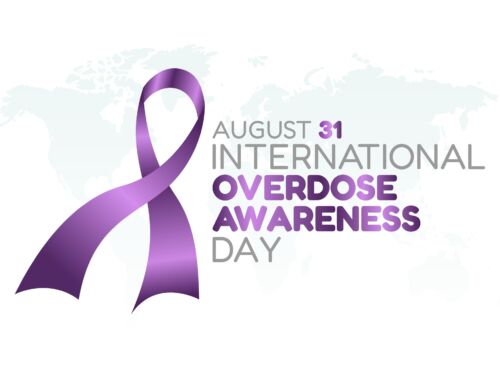In recent years, the opioid epidemic has taken new and more dangerous turns. One of the latest developments is the emergence of a synthetic opioid group known as nitazenes. While still unfamiliar to many, these substances are already contributing to overdose deaths across the United States, including here in South Jersey.
For individuals and families navigating the risks of substance use, awareness of nitazenes can be life-saving. At Greenbranch Recovery in Egg Harbor Township, we’re committed to providing clear, accurate information and compassionate support to our community. Call us today at 609-622-5101 or contact us online to learn more.
What Are Nitazenes?
Nitazenes are a class of synthetic opioids originally developed in the 1950s for potential pharmaceutical use. However, due to their extreme potency and safety concerns, they were never approved for medical treatment in humans or animals. After decades of obscurity, nitazenes have recently reemerged in the illicit drug supply.
These substances are now being found in counterfeit pills and street drugs, often without the user’s knowledge. They may be present in drugs sold as oxycodone, heroin, Xanax, MDMA, or even cocaine. In some cases, nitazenes have even been detected in vape liquids. This makes them a hidden danger, especially for people who think they are taking familiar substances.
Because nitazenes are not part of standard toxicology screenings, they can go undetected during both overdose assessments and routine drug testing. Many users have no idea they have ingested them until symptoms of overdose occur.

Why Are Nitazenes So Dangerous?
The primary risk of nitazenes lies in their potency. Some variants are many times more powerful than fentanyl, which itself is already 50 to 100 times stronger than morphine. Here are a few examples based on available data:
- Etonitazene is estimated to be up to 500 times stronger than heroin.
- Isotonitazene is 2 to 3 times more potent than hydromorphone, a strong prescription opioid.
- Isotonitazepyne may be up to 1,000 times stronger than morphine.
- Metonitazene is comparable in strength to fentanyl.
- Even “weaker” variants like propylnitazene and menitazene are still 10 to 50 times more potent than morphine.
When such powerful substances are consumed unknowingly, the risk of overdose increases significantly. A dose smaller than a grain of salt can suppress breathing and cause death.
Another serious concern is how nitazenes affect overdose response. Naloxone (Narcan), the widely used opioid overdose reversal medication, may not be as effective against nitazene overdoses. Multiple doses are often required, and emergency medical attention is critical.
Nitazenes in New Jersey
While nitazenes are relatively new to the national conversation, signs of their spread are already evident in multiple parts of the country, including New Jersey. Although state-level reporting specific to nitazenes is still limited, public health professionals are raising concerns about their presence in the regional drug supply.
Communities in South Jersey like Egg Harbor Township, Galloway, Northfield, and Cape May are vulnerable due to the increased circulation of counterfeit pills and illicitly manufactured opioids. Many overdose cases in these areas involve drugs that were assumed to be something else, which is consistent with how nitazenes are typically encountered.
Emergency departments and harm reduction organizations across the region are noting more cases that require multiple doses of naloxone or that don’t respond predictably to standard overdose interventions. This emerging pattern highlights the importance of staying ahead of these trends with community education, increased access to treatment, and harm reduction strategies.
How Greenbranch Recovery Is Responding
At Greenbranch Recovery, we recognize the urgency of this growing threat. Our clinical team actively monitors emerging trends in substance use so we can provide relevant and effective care. This includes educating our clients about the presence and risks of nitazenes.
We offer Medication-Assisted Treatment (MAT), which combines medications with counseling and behavioral therapies to support long-term recovery. Our treatment plans are tailored to each individual’s needs and delivered in a trauma-informed, respectful environment.
We also prioritize education for families. When loved ones understand the dangers of synthetic opioids and how to respond to overdoses, they become empowered participants in the recovery process. Our team provides resources, support groups, and one-on-one guidance to help families navigate these complex challenges. Call us today at 609-622-5101 or contact us online to learn more.
What You Can Do Right Now
Staying informed is one of the most powerful tools for preventing overdose and supporting recovery. If you or someone you care about uses substances, there are steps you can take to reduce harm and stay safe.
First, learn to recognize the signs of opioid overdose. These may include slowed or stopped breathing, blue lips or fingertips, unresponsiveness, and gurgling or choking sounds. Quick action saves lives.
Second, keep naloxone on hand and know how to use it. While nitazene overdoses may require multiple doses, naloxone can still be a critical first response. Free or low-cost naloxone is often available at local pharmacies or through community programs in Atlantic County.
Third, understand the limitations of current drug testing. Most standard strips do not detect nitazenes. While newer test strips are being developed to identify some variants, they are not yet widely available. Until they are, avoid using drugs alone, use fentanyl and drug test strips where possible, and seek professional help when needed.
Finally, don’t wait to seek help. Greenbranch Recovery provides compassionate, evidence-based treatment for opioids and substance use disorders. Whether you’re in Egg Harbor Township, Galloway, Northfield, or anywhere in South Jersey, we’re here to support your journey toward recovery. Call us today at 609-622-5101 or contact us online to learn more.
Call Greenbranch Recovery For Help Today
The presence of nitazenes is a reminder that the landscape of substance use is constantly changing. But no matter how the risks evolve, the path to recovery remains open. At Greenbranch Recovery, we’re dedicated to helping individuals and families heal with dignity, backed by the latest evidence and the strength of community.
Call us today at 609-622-5101 or contact us online to learn more. We serve Atlantic County, Cape May County, and the surrounding South Jersey region with care that empowers lasting recovery.




